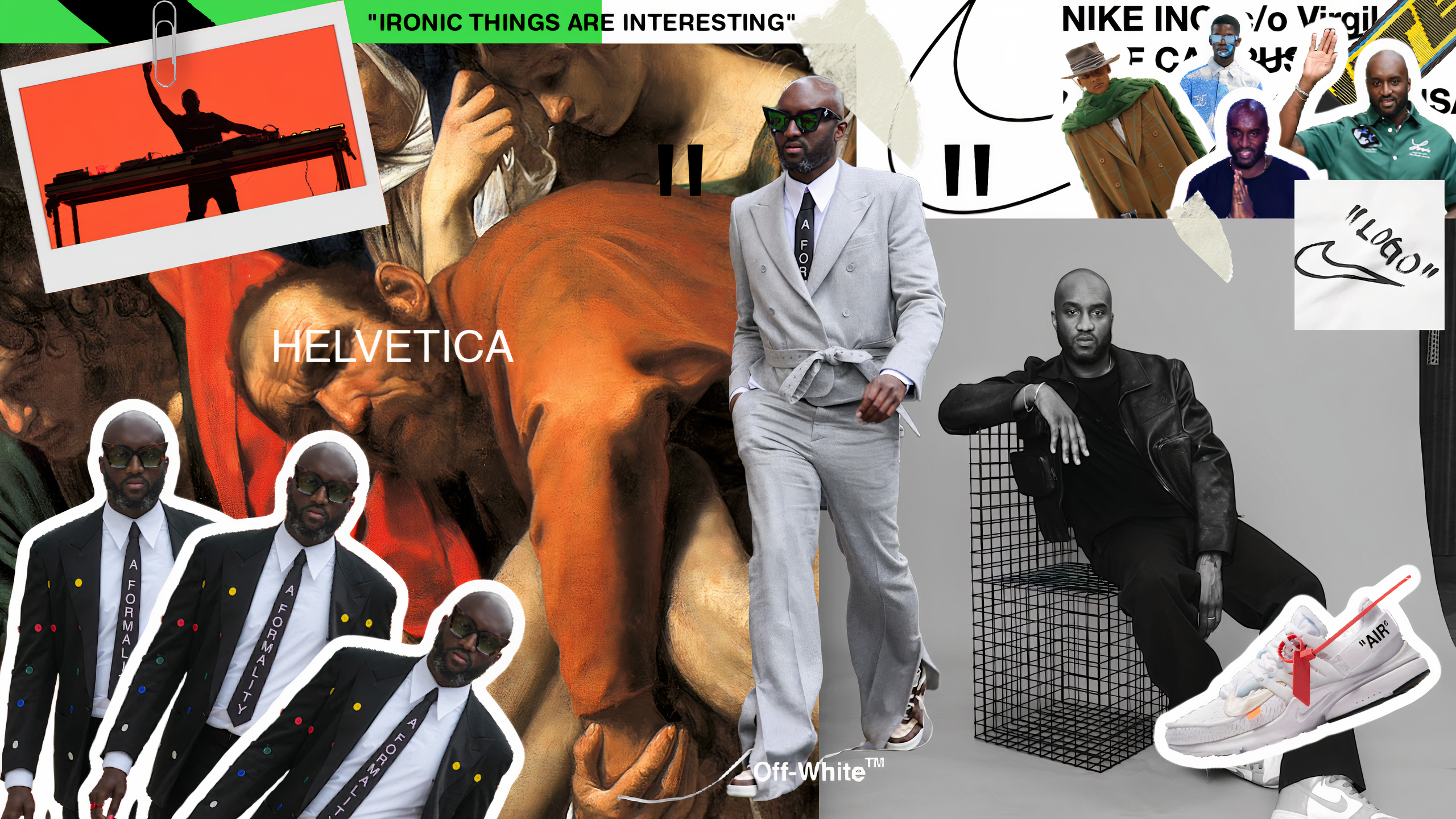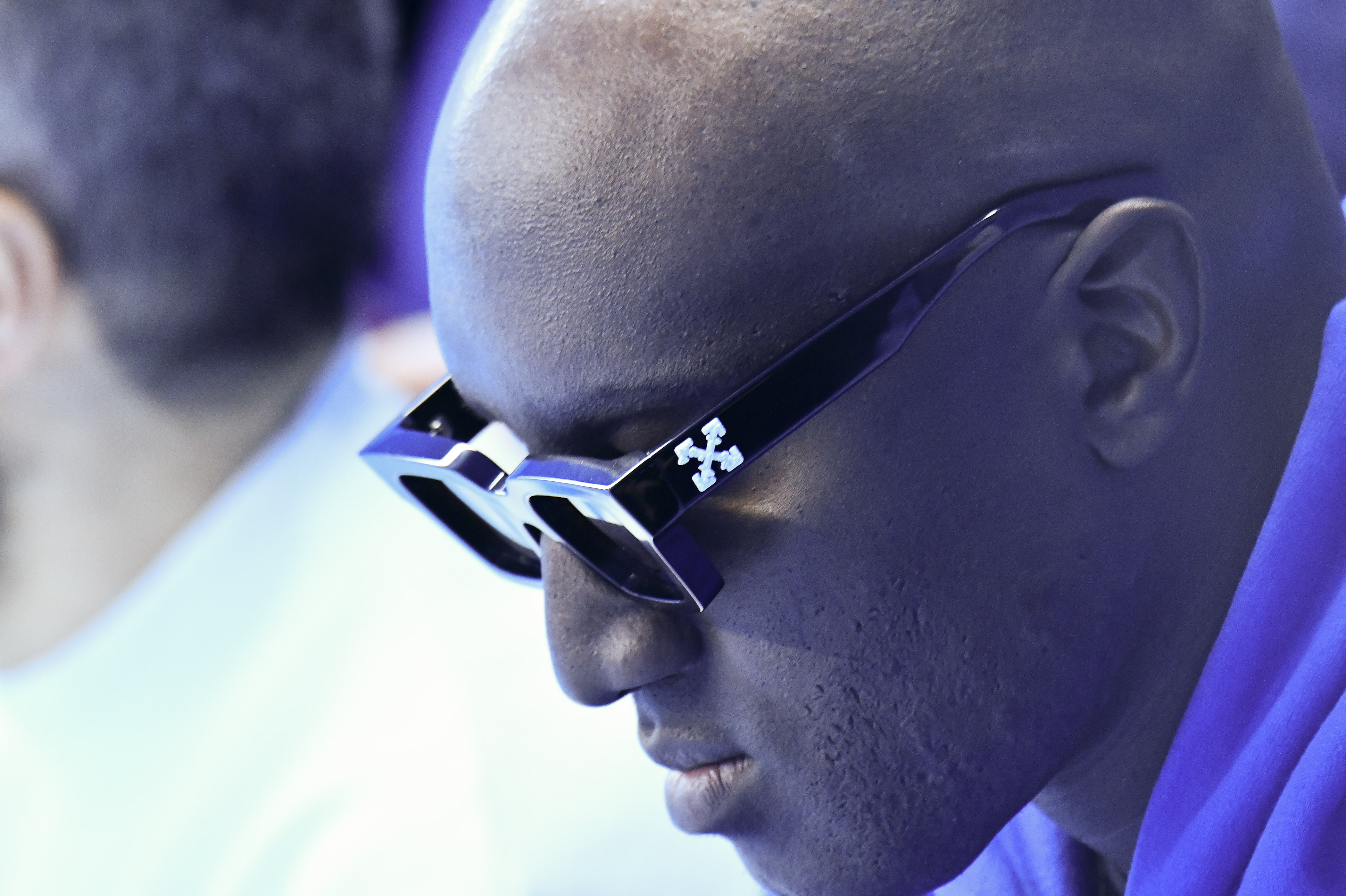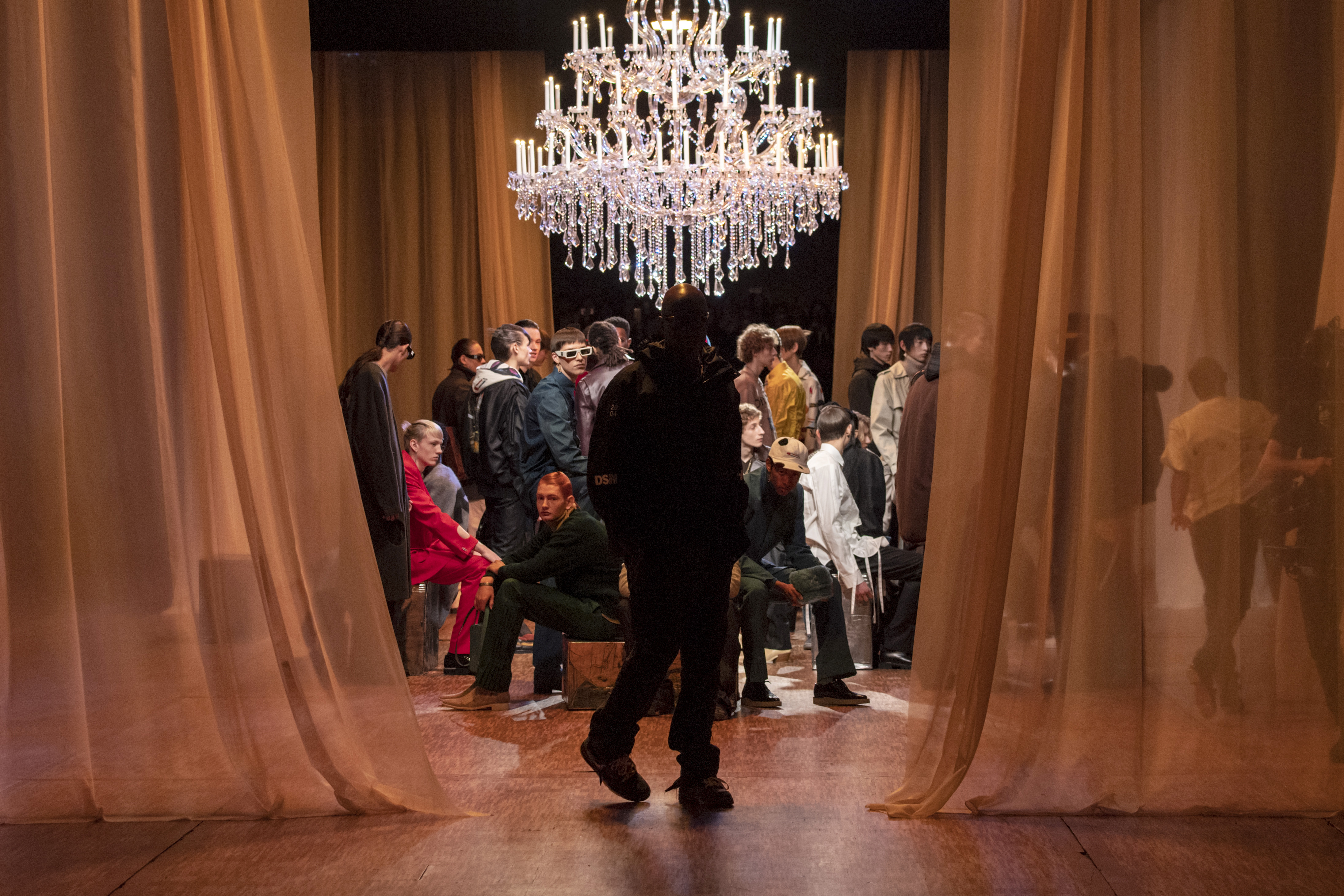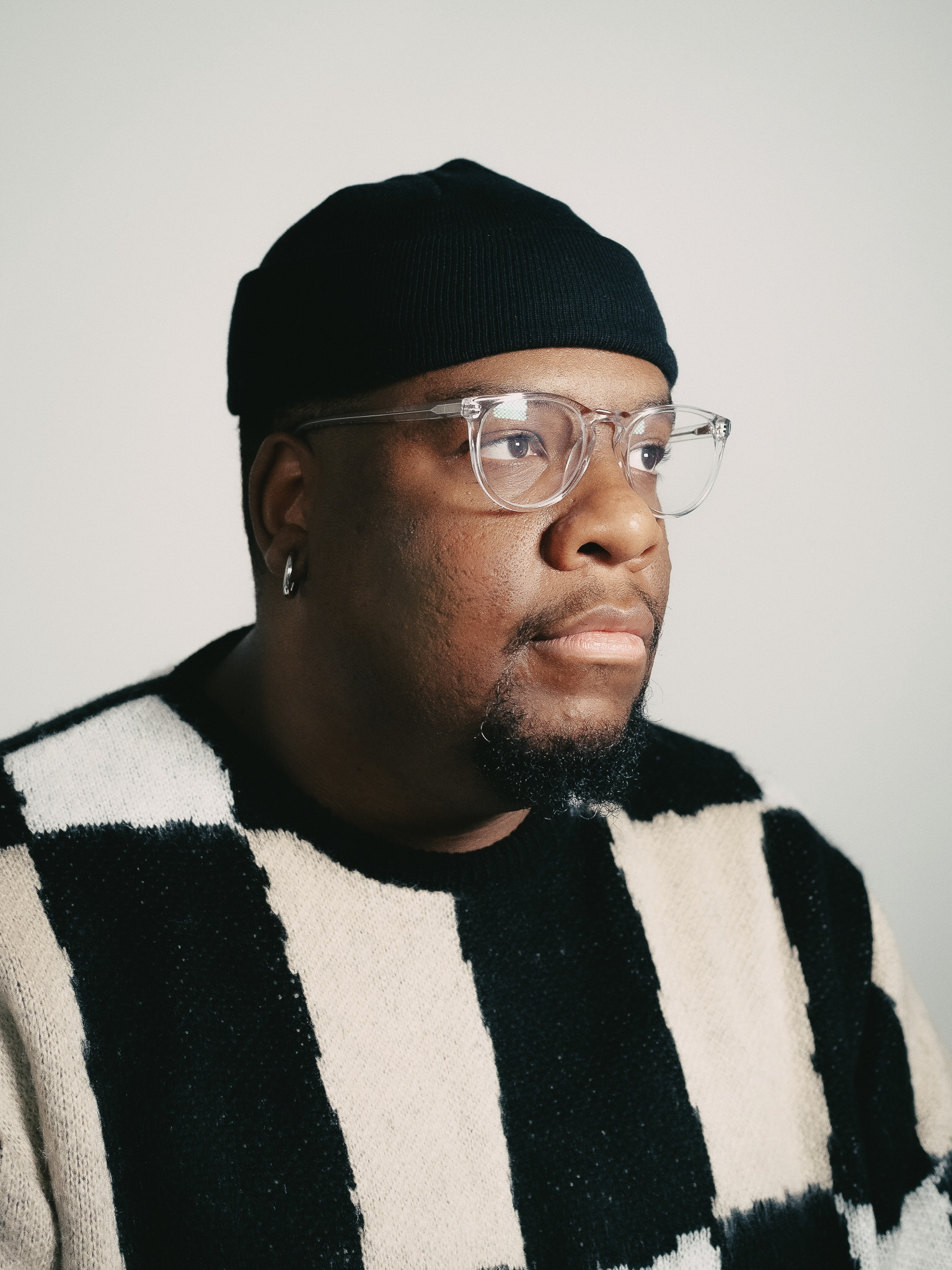

How can I possibly summarize the impact of one of my idols in 1,200 words or less? I can’t. I’ve written, deleted and re-typed this paragraph countless times. How can I express the ways in which Virgil Abloh influenced and altered the course of my life? The answer is to write from the heart. And, that’s what this is: a heartfelt, personal essay about the myriad ways Virgil impacted my life—allowed this sneaker-loving kid to feel seen in the global fashion space, broadened my knowledge of cultural and artistic movements, dared me to create without limits, and showed me that a Black kid from the Midwest can do anything. I would be remiss if I didn’t give credit to Virgil for teaching me, and so many Black millennial kids alike, that it was OK to pull inspiration from anywhere, that it was OK to dabble in multiple disciplines, and to creatively explore without bounds. I’m, in part, here today doing what I do because of the school of Abloh.
Along with the rest of the world, the news of his passing came as a shock to me yesterday. How could such an integral cultural force be taken from us so soon? Abloh, the multi-hyphenate, polymath, renaissance man—Jack of all trades—leaves behind an immeasurable absence. He revolutionized the creative director role, shifted the focus to the intention behind branding and marketing, merged worlds, and helped cement high-end streetwear in the fashion cannon. Accolades, accomplishments and cultural zeitgeist moments aside, Virgil inspired an entire generation of thinkers, dreamers and doers to go forth and create infinitely—including me.

I grew up experiencing fashion via traditional print magazines in the early 2000s, but I never saw anything in the glossies that represented me—me, this weird, Black pre-teen who skateboarded, wore Vans and Chucks, listened to N.E.R.D., LCD Soundsystem, and Kanye, and was inspired, in equal parts, by indie rock, BBC, The Hundreds and Bape. That was until I joined Tumblr in 2009 and saw that iconic image of The Rat Pack, including Virgil, photographed by Tommy Ton outside a Comme des Garçons show—and from there I felt seen. Virgil in that blue Moncler puffer, grey slacks and Yellow sneakers with a bow-tie—juxtaposing prep, with in-demand sneakers and throwing in a mix of high end—a vision of streetwear as we know it today, its interjection into the fashion vernacular. I instantly became fascinated by Abloh. With Tumblr as my medium, I learned more about him, this man behind the scenes. He was an arbiter of taste and I soaked it all up. From Carravagio images, to Mies van der Rohe chairs, obscure 80s album covers and the importance of typeface, Abloh became my teacher, helping me shape my own aesthetic lens.
10 years ago today.
"Kanye brought his group of friends to Paris to take in fashion week for the first time and crash the party."
📸 @_tommyton pic.twitter.com/rPzzpZncOM
— Complex (@Complex) January 23, 2019
I didn’t expect this loss to impact me in the way it did. It shattered me. I’ve always felt so connected to Virgil, this Black creative from the Midwest who studied architecture, listened to a wide scope of music—from Miles Davis, to Jay Electronica—loved Baroque art and sneakers. I saw myself in Virgil. As people of color, we tend to grow up in households that push following one distinct path, one career, one dream job. Virgil, the child of Ghanian immigrants, broke that mold, showing Black creative, ambitious kids like myself, that their worldviews shouldn’t be restricted. Architect, fashion designer, product designer, DJ, footwear designer. He once told W magazine: “For me, the only thing I truly am is a creative person. I have ideas across all categories, so in a way it’s a matter of understanding and offering a suggestion to what the future could hold. Fashion is just one field of many that design can be applied to.” I’m continuously striving for that, to create without hesitation, without fear, without restrictions.
Chicago was just a train ride away form my native Saint Louis, so my friends and I would frequently visit, go to the MCA, go thrifting, go to a concert, and, for me, always visiting RSVP Gallery. That store became a refuge for me—a cultural Mecca at the intersection of art, design and fashion. I kept going back, buying a book or keychain here and there in the hopes that I would meet Virgil himself.
One day, I was in town for a Theophilus London—who was also a part of Virgil and Ye’s rat pack— concert, and I made a visit to RSVP Gallery. I was shopping for an Off-White shirt to wear to the concert that night when Virgil walked in. I was so starstruck, I couldn’t even formulate words. He walked over to me and told me that he loved my shoes—Nike Blazers, which would years later become one of the Nike models he would re-interpret—and that I should get the shirt I was trying on. He sat there as I tried on shirts and struck up a conversation. We talked about Eames chairs, The Cool Kids and I mentioned I was in town for a Theophilus London show—he instantly lit up. Virgil was the creative director of London’s album, creating the visual branding and language of the album. We chopped it up for half an hour, with him inviting me to the Theophilus London afterparty. I remember walking away being so relieved. It’s not everyday that you meet your idols, and for him to be so genuine, and take the time to talk to me—it’s an experience I will remember forever.


Years later, I would attend one of his DJ sets in New York and we bonded over the Yeezus packaging that he designed, and me seeing a Picasso painting in person for the first time. He most likely didn’t remember I was that same kid that fan-girled over him years ago at his boutique, but it didn’t matter. He was always so invested in talking to and hearing the perspectives of young creatives. For myself and many other young Black creatives alike, Virgil represented so much—especially freedom. Freedom as a creative is something so rare, and he unlocked the codes. He created across mediums, constantly exploring and learning. It’s because of him that this new class of Black creatives, the new vanguard, aren’t bound to one distinct lane or lens. He will surely be missed with his work continuing to inspire creatives for generations to come.
Virgil,
I hope you know that even though you might have not intentionally set out to change the world, that you absolutely did. You created by your own rules and codes, you created spaces for young creatives to flourish, and you took up space, as a Black designer in rooms that traditionally weren’t designed for you—and you did it all in one lifetime. You shifted the culture forward and interjected streetwear into the fashion cannon, you redefined the Creative Director role, changed typography and HELVETICA forever, from BEENTRILL and Pyrex, to being the first Black designer to helm Louis Vuitton—you, changed the zeitgeist forever.
Rest easy.
Sincerely,
A fellow streetwear kid















